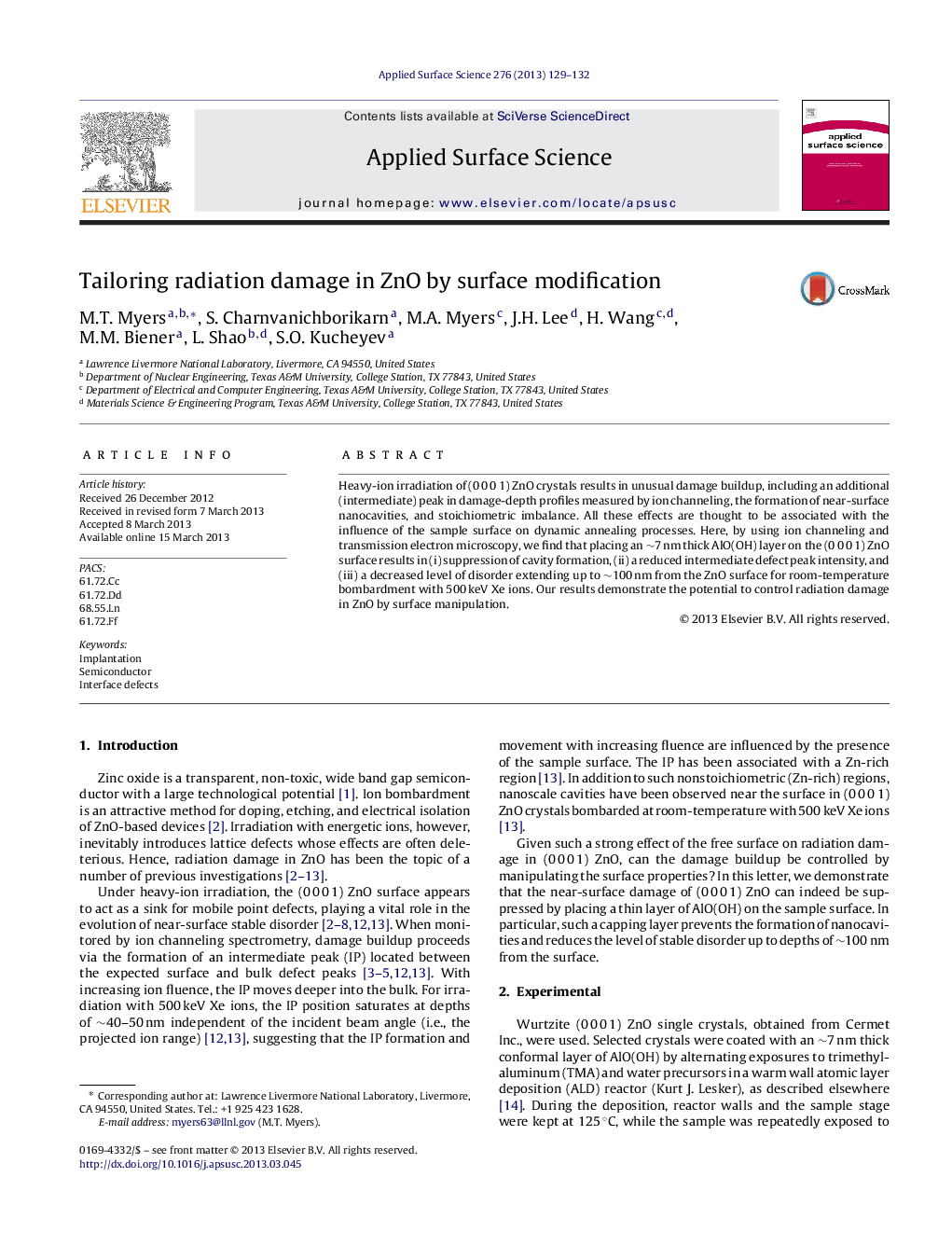| Article ID | Journal | Published Year | Pages | File Type |
|---|---|---|---|---|
| 5360057 | Applied Surface Science | 2013 | 4 Pages |
Abstract
Heavy-ion irradiation of (0 0 0 1) ZnO crystals results in unusual damage buildup, including an additional (intermediate) peak in damage-depth profiles measured by ion channeling, the formation of near-surface nanocavities, and stoichiometric imbalance. All these effects are thought to be associated with the influence of the sample surface on dynamic annealing processes. Here, by using ion channeling and transmission electron microscopy, we find that placing an ~7 nm thick AlO(OH) layer on the (0 0 0 1) ZnO surface results in (i) suppression of cavity formation, (ii) a reduced intermediate defect peak intensity, and (iii) a decreased level of disorder extending up to ~100 nm from the ZnO surface for room-temperature bombardment with 500 keV Xe ions. Our results demonstrate the potential to control radiation damage in ZnO by surface manipulation.
Related Topics
Physical Sciences and Engineering
Chemistry
Physical and Theoretical Chemistry
Authors
M.T. Myers, S. Charnvanichborikarn, M.A. Myers, J.H. Lee, H. Wang, M.M. Biener, L. Shao, S.O. Kucheyev,
